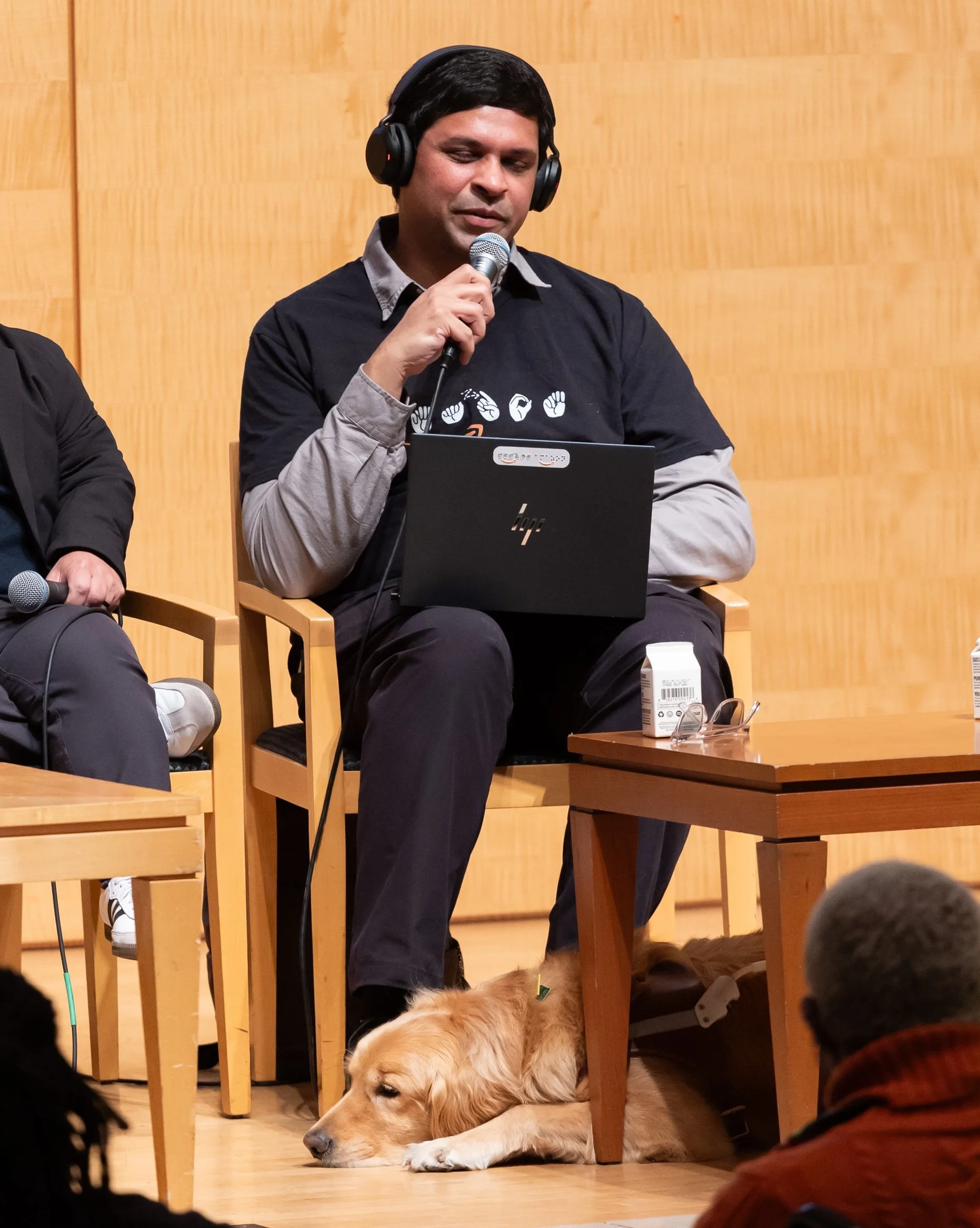Building an Accessible Future: Insights from Kiran Kaja, Principal Product Manager for Accessibility at Amazon
At a recent event hosted by the San Francisco Disability Business Alliance (SFDBA) and sponsored by Amazon, attendees were treated to a powerful and inspiring keynote from Kiran Kaja, Principal Product Manager for Accessibility at Amazon. Kiran, who has been blind since birth, offered a deeply personal and professional perspective on how technology can transform lives—and why accessibility is both a moral imperative and a business opportunity.
A Journey Driven by Technology
Kiran opened his talk by reflecting on his own journey: Growing up in India in the 1980s and 1990s, he had no access to the kinds of technology that exist today. He didn’t read an entire book until the age of 18. That milestone, delayed not by intellect but by inaccessibility, shaped his dedication to transforming technology into a tool of empowerment.
His 20-year career spans leading companies like SAP, Google, Adobe, and Instagram. Now at Amazon, he’s part of a global team ensuring the company’s products and services are accessible to people with disabilities.
Accessibility Is Good Business
Kiran debunked common myths around accessibility—namely, that it's complicated, expensive, or unnecessary because “we don’t have customers with disabilities.” People with disabilities and their families represent a spending power of $8.5 to $30 trillion globally. So, Accessibility is a business opportunity.
Loyalty Through Accessibility
Kiran shared a relatable story from his own life in Berkeley wher two local restaurants accept only online orders. One uses an accessible website. The other doesn’t. Guess which one he orders from weekly? The takeaway: accessibility builds customer loyalty. “If you make your product accessible, we’ll stick with it,” he said. “Because accessibility is rare, and once we find something that works for us, we’re loyal customers.”
He cited a study showing that 80% of disabled consumers in the U.S. regularly choose Amazon for its consistency, affordability, and accessibility.
The Next Generation Expects It
Perhaps the most touching story of the day came from a past conference, where an 8-year-old blind child effortlessly used voice technology—Alexa, Siri, Google—to get information, navigate a smart TV, and watch his favorite show. For younger generations, inclusive tech isn’t a luxury—it’s expected.
Making Accessibility Practical
Kiran highlighted several ways Amazon has built accessible features not because regulations demanded it, but because customers needed it. These include:
Navigation Assistant for keyboard-only users
Product Summary View for simplified browsing
A large collection of audio-described titles on Prime Video
Accessible Fire Tablets starting at just $59, with built-in voice and magnification tools
He also noted that people with disabilities are twice as likely to shop online as the general population, making digital accessibility even more essential for e-commerce.
Ask Us—We Want to Help
When asked how businesses can better engage the disability community, Kiran’s answer was simple: “Ask us.”
Involving people with disabilities in planning and decision-making isn’t just best practice—it’s smart business. People with disabilities bring lived experience, creative solutions, and a unique understanding of barriers.
Don’t Be Afraid to Start
Many small business owners worry about getting accessibility wrong. Kiran encouraged them to treat accessibility like good customer service.
“If someone with a disability walks into your store, do what you’d do with any customer—ask, ‘How can I help you?’ It’s that simple.”
He urged business owners to choose platforms that already support accessibility features when setting up websites or e-commerce stores, and to familiarize themselves with local accessibility laws, such as those governing service animals.
“With an aging population, more people will acquire disabilities—visible and invisible. The question isn’t if you’ll serve a disabled customer, it’s when.”
Small Steps, Big Impact
Kiran offered a few small, impactful tips for any business:
Add alt text for images on social media so blind users can understand the content.
Use closed captions and descriptions on videos to make them inclusive for deaf and blind users.
Make online forms, menus, and purchasing systems navigable by keyboard and screen reader-friendly.
The Future is Accessible—and AI Can Help
Kiran closed with a look to the future, noting how AI and machine learning are opening new frontiers in accessibility. Today, he can take a photo of a room and receive a spoken description of what’s inside, including objects, people, and layout.
“Businesses that embrace AI and accessibility will lead the way. These tools aren’t just futuristic—they’re transformative.”
Final Thoughts: Accessibility as a Mindset
Accessibility isn’t a feature—it’s a mindset. And more than that, it’s a relationship. Whether you’re a startup or an established brand, engaging the disability community, starting with small, meaningful changes, and asking “How can I help?” can lead to loyal customers, better products, and a more inclusive society.
In the words of Kiran Kaja: “Accessibility is not about charity. It’s about equity, opportunity, and good business.”

